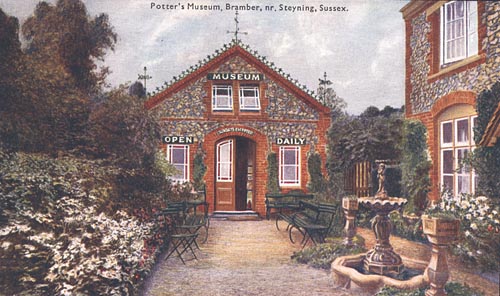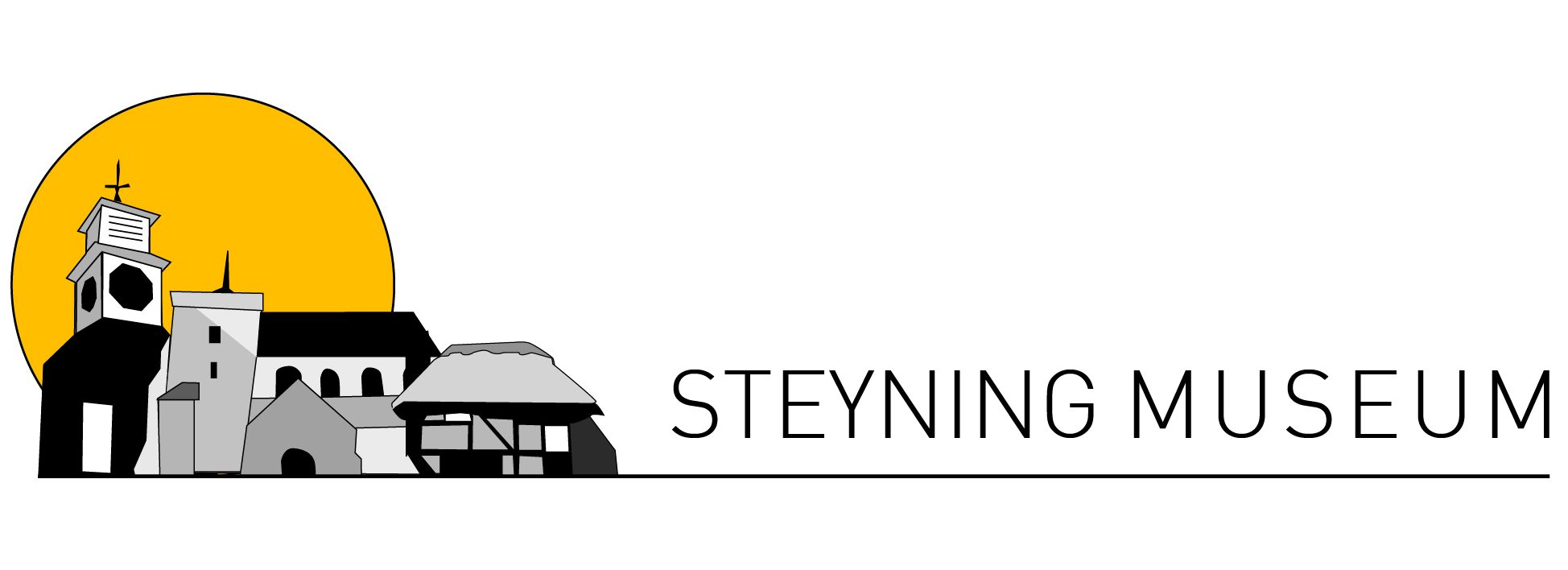by Tony Ketteman
Had you lived in West Sussex during the last quarter of the 19th century, you may well have chosen to spend a sunny afternoon sampling the delights of Bramber. This is still something people do, but the modern visitor enjoys a very different experience to those tourists arriving by train over a century ago.

To the late Victorians, Bramber was a thriving entertainment centre, known for its tea gardens and in particular, for Potter’s Museum. So popular were these attractions that the platform at Bramber station had to be lengthened to accommodate the long trains needed to bring the crowds at weekends. For those who lived locally in the 1970’s, Potter’s Museum will be remembered as somewhere which delighted children on those wet days in the school holidays. Walter Potter’s stuffed animals were a curiosity, but they eventually went out of fashion. Then, almost as soon as the collection was auctioned off and dispersed around the world, the artist Damien Hirst revived an interest in Walter Potter’s taxiderny.
The Victorians viewed the world differently and a case displaying a stuffed bird or family pet was a commonplace in the parlour. This echoed the grander displays of the stag’s heads of the hunting classes and the trophies from India displayed by the sons of empire. Given this interest, it is no wonder that Potter’s collection of humorous taxidermy drew such large crowds of day trippers to Bramber.

Walter Potter was born in 1835 and began to experiment with taxidermy by the age of 15, preserving the body of a pet canary. His family ran the White Lion (now the Castle) in Bramber and as he expanded his experiments in preservation, he was obliged to move to the stable loft. This was the time of the Great Exhibition and one of the attractions was much to the taste of the Victorians, Hermann Ploucquet’s display of taxidermy. The Comical Creatures from Wurtemberg showed stuffed animals in human situations. They were so popular that a book of hand-coloured engravings of them was published. We have no way of knowing whether young Walter Potter saw the exhibition or the book, but his growing interest in taxidermy was clearly much in tune with popular taste.
By the age of 19, he had produced 98 stuffed birds which made up the first of the tableaux for which he became well known. This was “The Original Death and Burial of Cock Robin”, inspired by a book of stories belonging to his younger sister. Within the large glass case was displayed the sorrowful funeral procession of Cock Robin together with the Sparrow who killed him with his bow and arrow, Parson Rook and the Owl who dug the grave, accompanied by the mourners, all of whom made their way through the graveyard.
The tableau was an immediate success with the customers of the White Lion when it was first displayed in a summer house behind the inn during the summer of 1861. This success launched young Walter on a career preparing stuffed animals for Victorian parlours, but he continued to produce the more creative tableaux. His growing stock meant a move to new premises in 1866 and again in 1880 to the specially constructed building still in Bramber today. By then the collection was termed a ‘museum’ and the tableaux of small animals and birds had been joined by the likes of the two-headed lambs and four-legged chickens which fascinated later generations of children.
Where did Walter obtain the large number of animals he used in the displays? We know that he had an arrangement with Ward’s Farm in Henfield to take over their continuous supply of unwanted kittens produced by the farm cats, and his growing reputation locally meant that the public brought him items of interest.
Walter died in 1918 and was buried in Bramber churchyard, but the museum continued under the direction of his daughter and grandson. Sadly, by the early 1970s the family had decided to sell the Museum, which resulted in it moving to Arundel, then to Jamaica Inn in Cornwall in the mid 1980s. The final blow for Walter Potter’s collection came with the decision by the proprietors of Jamaica Inn that they could make more profitable use of the space occupied by the collection which was therefore auctioned in September 2003.
The management of Steyning Museum decided it should try to retain something from the collection for Steyning, Bramber and Beeding. Chris Tod, the museum curator, travelled to the auction in Cornwall. The prices were sky high and the museum did not manage to acquire any of the taxidermy exhibits.
Our small collection now includes the canary above. Potter preserved this beloved pet for a Bramber resident whose family later presented it to Steyning Museum for display.
Little did Chris Tod know that Damien Hirst had offered one million pounds to buy the complete collection, intending to keep it from being dispersed. He was too late. The auctioneers were obliged to continue with the auction. There have since been many Walter Potter exhibitions and attempts to discover the whereabouts of as many of the tableaux as possible, though undoubtedly some will never be seen again.
There is another article on this website with more Walter Potter links HERE
See more about Walter Potter on the Victorian Taxidermy website.
See how Bonham’s auction house described the collection HERE.
Damien Hirst wrote to the Guardian newspaper about the auction of Walter Potter’s collection in September, 2003. See his article Mr Potter, Stuffed Rats and Me.
Read an article in the Guardian newspaper about the Museum of Everything exhibition.
